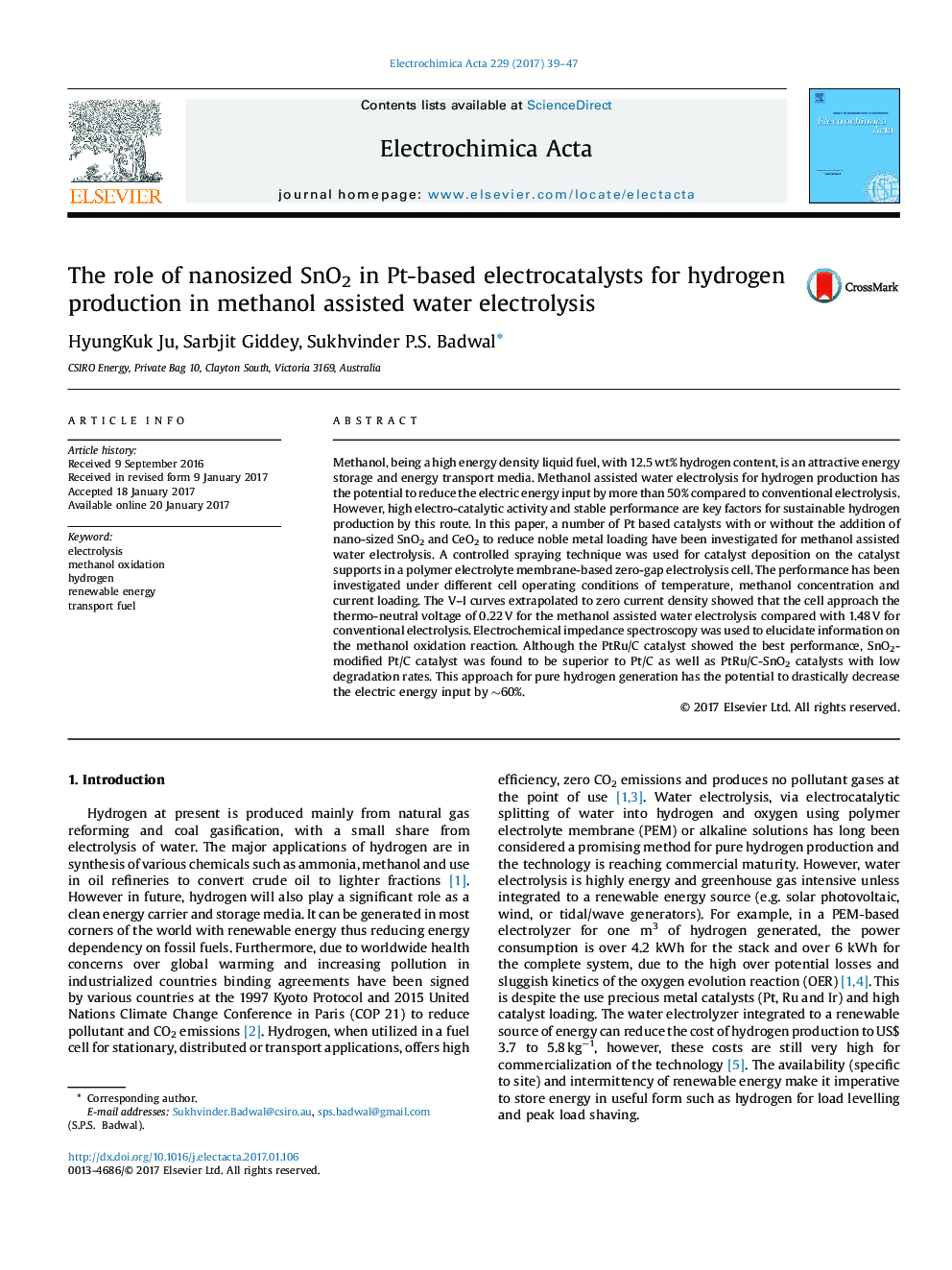| Article ID | Journal | Published Year | Pages | File Type |
|---|---|---|---|---|
| 4767287 | Electrochimica Acta | 2017 | 9 Pages |
â¢Methanol assisted water electrolysis studied with different anode catalysts.â¢Pt/C with Pt partially substituted by nano SnO2 is a cost effective catalyst.â¢Poisoning of the catalyst surface by CO-like intermediates elucidated by EIS.â¢Methanol assisted water electrolysis can reduce electric energy input by 60%.â¢This process offers sustainable approach to cost effective hydrogen generation.
Methanol, being a high energy density liquid fuel, with 12.5Â wt% hydrogen content, is an attractive energy storage and energy transport media. Methanol assisted water electrolysis for hydrogen production has the potential to reduce the electric energy input by more than 50% compared to conventional electrolysis. However, high electro-catalytic activity and stable performance are key factors for sustainable hydrogen production by this route. In this paper, a number of Pt based catalysts with or without the addition of nano-sized SnO2 and CeO2 to reduce noble metal loading have been investigated for methanol assisted water electrolysis. A controlled spraying technique was used for catalyst deposition on the catalyst supports in a polymer electrolyte membrane-based zero-gap electrolysis cell. The performance has been investigated under different cell operating conditions of temperature, methanol concentration and current loading. The V-I curves extrapolated to zero current density showed that the cell approach the thermo-neutral voltage of 0.22Â V for the methanol assisted water electrolysis compared with 1.48Â V for conventional electrolysis. Electrochemical impedance spectroscopy was used to elucidate information on the methanol oxidation reaction. Although the PtRu/C catalyst showed the best performance, SnO2-modified Pt/C catalyst was found to be superior to Pt/C as well as PtRu/C-SnO2 catalysts with low degradation rates. This approach for pure hydrogen generation has the potential to drastically decrease the electric energy input by â¼60%.
Graphical abstractDownload high-res image (147KB)Download full-size image
